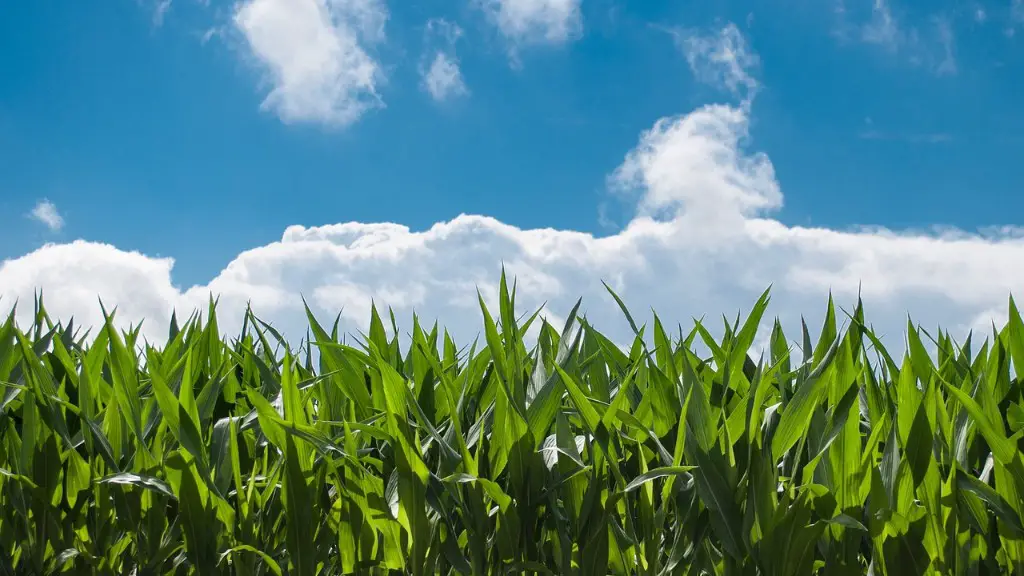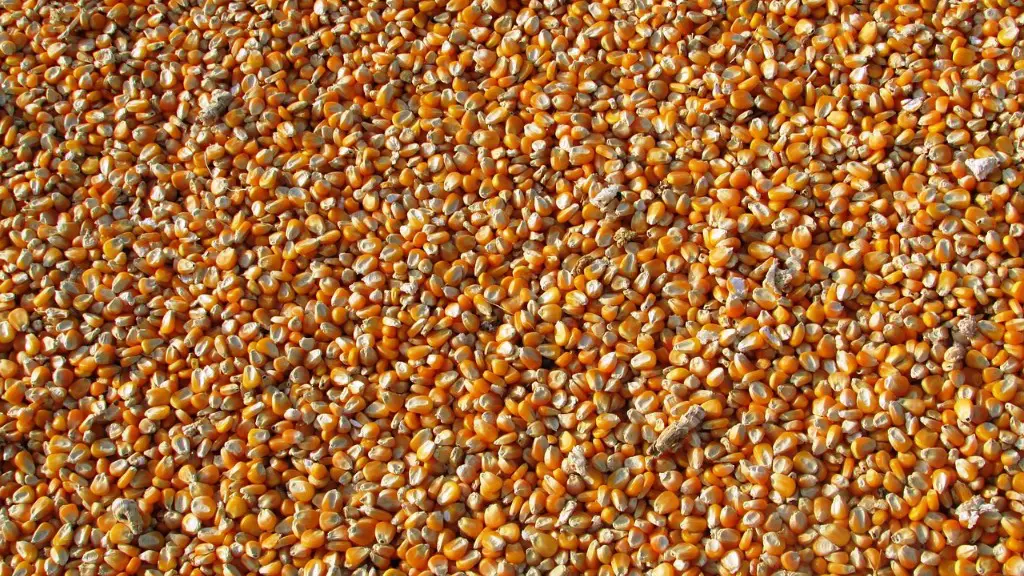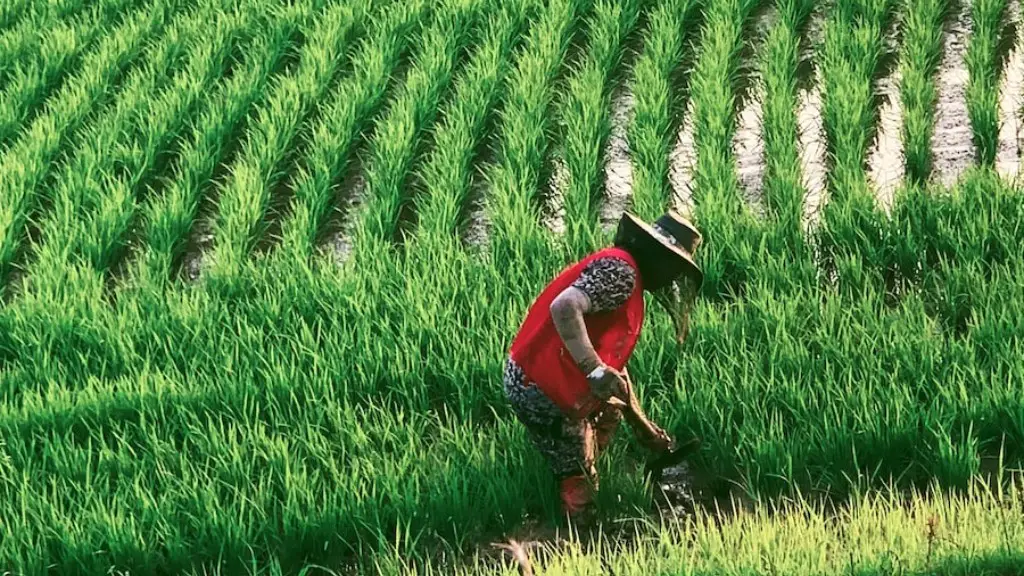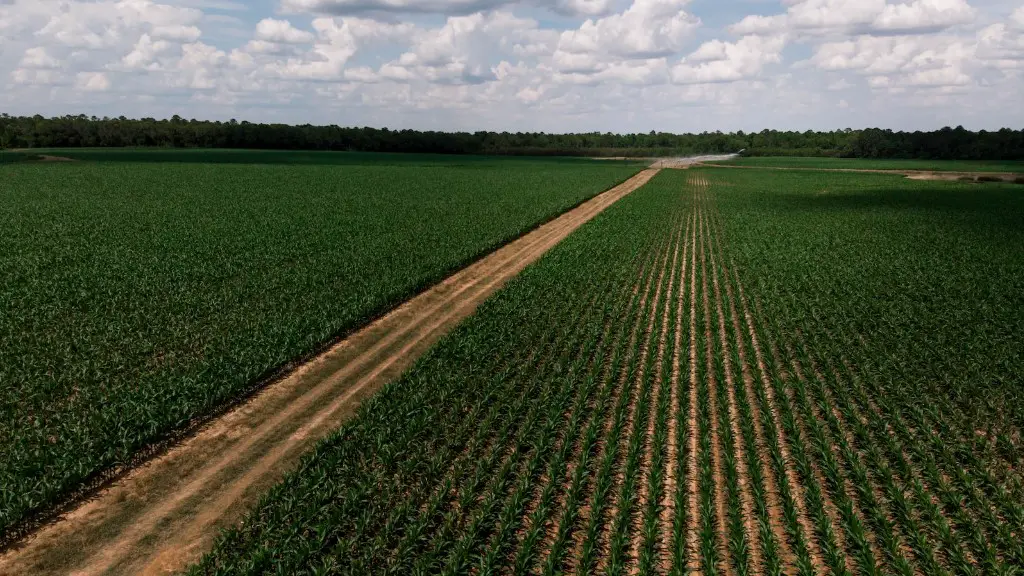Agriculture contributes to greenhouse gases in a number of ways. The most significant way is through the release of methane and nitrous oxide from livestock and agricultural activities. Methane is a gas that is produced when organic matter decomposes without oxygen present. Methane is also produced from the digestive processes of livestock, particularly cows. Nitrous oxide is a gas that is emitted from the burning of fossil fuels, as well as from agricultural activities such as fertilizer use and livestock manure management.
Agriculture contributes to greenhouse gases in a number of ways. First, through the production of methane gas by livestock. Secondly, through the production of nitrous oxide gas by the use of fertilizers. And finally, through the burning of fossil fuels to power farm machinery.
What greenhouse gases are emitted by agriculture?
Agricultural greenhouse gas emissions come from a variety of sources, including livestock, rice production, fertilizer use, and deforestation.
Livestock are a significant source of methane emissions, which are produced by their digestive systems. Rice production is also a major source of methane emissions, due to the process of wetland cultivation.
Fertilizer use can also contribute to greenhouse gas emissions, as the production of nitrogen-based fertilizers emits nitrous oxide. Deforestation is another major source of greenhouse gas emissions, as trees play an important role in the carbon cycle.
All of these sources of agricultural greenhouse gas emissions contribute to rising temperatures, which can have a number of negative impacts on the environment and human health.
The agricultural sector is a significant source of greenhouse gas emissions, accounting for around 10-12% of total emissions globally. The three main agricultural greenhouse gases are carbon dioxide (CO2), methane (CH4) and nitrous oxide (N2O).
CO2 is emitted from tropical deforestation, which is often associated with the conversion of land to agriculture. CH4 is emitted from livestock and rice production, while N2O is emitted from fertilizing or burning croplands.
The agricultural sector is responsible for around half of global methane emissions, and this gas is thought to be around 30 times more potent than CO2 in terms of its ability to trap heat in the atmosphere. N2O is also a very powerful greenhouse gas, with a global warming potential around 300 times that of CO2.
There is therefore a need for measures to reduce agricultural greenhouse gas emissions, in order to help mitigate climate change. Possible measures include increasing energy efficiency, promoting sustainable land management practices, and reducing methane emissions from livestock.
Does agriculture produce the most greenhouse gases
Other studies have found that agriculture contributes a much larger share of world greenhouse gas emissions than the Intergovernmental Panel on Climate Change (IPCC) reported in its Fifth Assessment Report. For example, the UN Food and Agriculture Organization (FAO) estimated that agriculture, forestry, and other land use activities accounted for 24 percent of global greenhouse gas emissions in 2010, while the IPCC put the figure at 12 percent.
A major reason for the discrepancy is that the IPCC report excluded emissions from land use and land-use change (such as deforestation), while the FAO included them. The FAO’s approach is generally considered to be more comprehensive, since deforestation and other land-use changes can have a significant impact on greenhouse gas emissions.
The bottom line is that agriculture is a major contributor to greenhouse gas emissions, and it’s important to take this into account when developing policies to address climate change.
Since 1970, human activity has resulted in a dramatic increase in CO2 emissions, which are now the main driver of climate change. The burning of fossil fuels and industrial processes are responsible for the majority of these emissions, while agriculture, deforestation, and other land-use changes are also major contributors. If we are to avert the most catastrophic impacts of climate change, it is essential that we rapidly reduce our emissions of greenhouse gases.
Why is agriculture bad for climate change?
According to the World Resources Institute, agriculture currently generates approximately 25% of all annual greenhouse gas emissions. This includes emissions from food production as well as from land-use changes associated with farming, such as clearing vegetation and plowing. Agricultural emissions are a significant contributor to climate change, and it is important to take steps to reduce them.
Agriculture is one of the leading sources of pollution in many countries. Pesticides, fertilizers and other toxic farm chemicals can poison fresh water, marine ecosystems, air and soil. They also can remain in the environment for generations.
How much of global warming is caused by agriculture?
The agricultural sector is a significant contributor to greenhouse gas emissions, with the global food system responsible for ~21–37% of annual emissions (Mbow et al, in press). Agricultural emissions come from a variety of sources, including livestock (enteric fermentation and manure management), crop production (nitrogen fertilizers and biomass burning), and land-use change (deforestation for farmland).
Livestock accounted for ~14.5% of total anthropogenic greenhouse gas emissions in 2011 (FAO, 2013), with enteric fermentation (i.e. methane emissions from livestock) contributing the majority of these emissions. Manure management is also a significant source of agricultural greenhouse gas emissions, accounting for ~2.7% of total anthropogenic emissions in 2011 (FAO, 2013). Crop production accounted for ~5.5% of total anthropogenic greenhouse gas emissions in 2011 (FAO, 2013), with nitrogen fertilizers and biomass burning being the major sources of emissions. Land-use change, particularly deforestation for farmland, is also a significant source of agricultural greenhouse gas emissions, accounting for ~2.7% of total anthropogenic emissions in 2011 (FAO, 2013).
Agricultural greenhouse gas emissions are a significant contributor to climate change
The largest source of greenhouse gas emissions from human activities in the United States is from burning fossil fuels for electricity, heat, and transportation. EPA tracks total US emissions by publishing the Inventory of US Greenhouse Gas Emissions and Sinks. In 2015, electricity production accounted for about 31% of total US emissions, while transportation (including cars, trucks, ships, trains, and airplanes) accounted for about 28%. Burning fossil fuels releases carbon dioxide and other greenhouse gases into the atmosphere. These gases trap heat and cause the Earth’s temperature to rise, which can lead to harmful effects on human health, the environment, and our economy.
What is the largest contributor to greenhouse warming
Fossil fuels are the largest contributor to global climate change because they release greenhouse gases like carbon dioxide and methane into the atmosphere. These gases trap heat from the sun and cause the Earth to warm up. The burning of fossil fuels is the main way that humans add these gases to the atmosphere.
Carbon dioxide levels in the atmosphere are rising at an alarming rate, and this is having a significant impact on our climate. The burning of fossil fuels is releasing large amounts of carbon dioxide into the atmosphere, and this is causing the Earth to warm. Carbon dioxide is a powerful greenhouse gas, and it is trapping heat in the atmosphere and causing the Earth to warm. This is a huge problem, and we need to find a way to reduce our emissions of carbon dioxide if we want to avoid catastrophic climate change.
Who are the top 5 largest emitters of greenhouse gases?
These five countries are responsible for almost half of the world’s total carbon dioxide emissions. China is the largest emitter, followed by the United States, India, Japan, and Russia. Together, these five countries account for about 48% of global emissions.
China is the world’s leading emitter of carbon dioxide, accounting for nearly 31 percent of global emissions in 2021. The top five largest polluters in the world are responsible for roughly 60 percent of global CO₂ emissions. These countries are China, the United States, India, Russia, and Japan. Together, they account for more than half of the world’s total emissions.
What are the 5 causes of greenhouse gases
The burning of fossil fuels release greenhouse gases into the atmosphere which act like a blanket, trapping heat and causing the Earth’s temperatures to rise. The main gases produced are carbon dioxide, water vapor, methane, and nitrous oxide.
Carbon dioxide is produced when we burn fossil fuels like natural gas, oil, and coal. If we continue to burn these fuels at the current rate, the amount of carbon dioxide in the atmosphere will rise to levels not seen in millions of years.
Methane is a gas that is produced when organic matter decomposes without oxygen. Landfills, rice paddies, and cattle farms are all sources of methane. If methane is released into the atmosphere, it can trap heat and contribute to climate change.
Nitrous oxide is a gas that is produced when we use fertilizers and burn fossil fuels. It is also a powerful greenhouse gas, trapping heat and contributing to climate change.
We need to take action to reduce our emissions of greenhouse gases if we want to prevent further climate change. There are many things we can do to reduce our emissions, such as using less energy, planting trees, and driving less.
The livestock sector is a major contributor to greenhouse gas emissions, accounting for around 14.5 percent of global emissions. Factory farming is a major driver of this, with the intensive rearing of animals producing huge volumes of greenhouse gases.
Carbon dioxide, methane and nitrous oxide are the three main greenhouse gases emitted by the livestock sector. Methane is the most potent of these, with factory farming responsible for around 60 percent of methane emissions from human activity.
Factory farming is intensifying climate change, and it is vital that we take action to reduce its impact. We can do this by choosing to eat less meat and dairy, and by opting for products from more sustainable farming systems.
What are two negative effects of agriculture?
While agriculture can have negative impacts on the environment, it can also have positive impacts. For instance, agriculture can trap greenhouse gases within crops and soils, or mitigate flood risks through the adoption of certain farming practices. This shows that agriculture can be a force for good in the fight against climate change.
Farming changed all of that by providing a steady source of food that could be stored and dessimated. This allowed for the development of civilizations and the rise of social classes. The have-nots were now those without access to land or the means to farm it, and they were forced to work for the haves in order to survive. This class system is still with us today, and is one of the root causes of poverty and inequality.
Warp Up
Farming and other agricultural activities are responsible for approximately 10 percent of the United States’ total greenhouse gas emissions, according to the Environmental Protection Agency. Greenhouse gases like carbon dioxide and methane trap heat in the atmosphere, making the Earth warmer and potentially changing the climate.
There are a few ways that agriculture contributes to greenhouse gas emissions:
• livestock production, like cattle, sheep, and pigs, emits methane gas
• clearing land for farming emits carbon dioxide
• using chemical fertilizers releases nitrogen gas
Agriculture contributes to greenhouse gases in a number of ways. First, agriculture emits methane, which is a powerful greenhouse gas. Second, agriculture emits nitrous oxide, which is also a potent greenhouse gas. Third, agriculture contributes to the production of carbon dioxide, which is a major greenhouse gas. Fourth, agriculture emits water vapor, which is another greenhouse gas. Lastly, agriculture alters the land surface, which can affect the amount of sunlight that is reflected back into the atmosphere, and thus the amount of greenhouse gases in the atmosphere.





